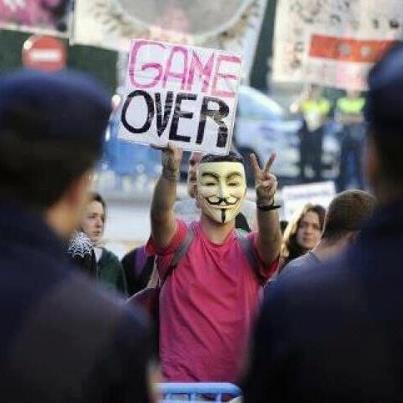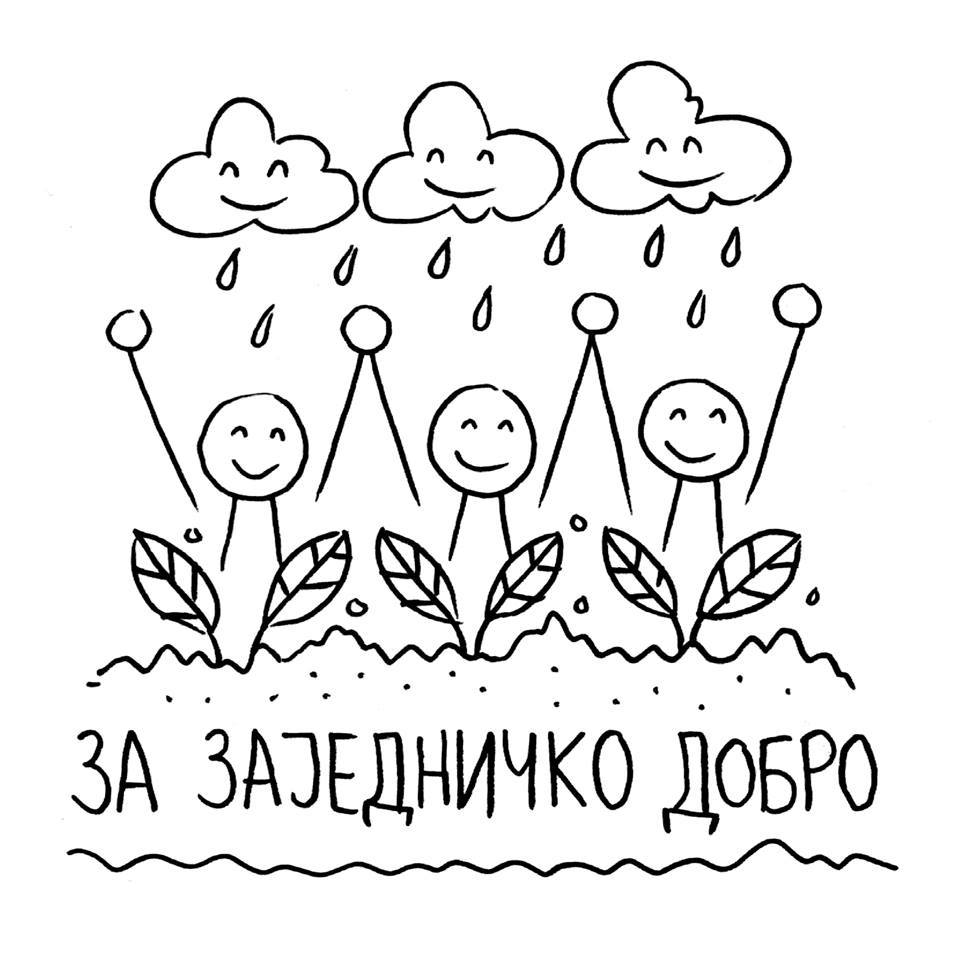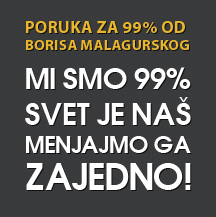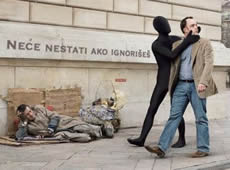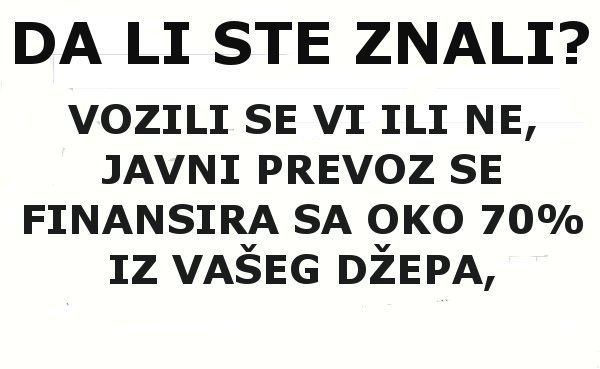Open reflection on collective thinking
Collective thinking is fundamentally opposed to the current system which is managed by the individualist thought. For this, we need time, it is a long-term process. It is usually common that, when considering a decision, two people with contrary ideas will tend to bring themselves into conflict and they will defend their ideas fiercely, with the single objective of convincing, winning or, at the most, reaching middle ground.
The main objective of collective thinking is constructing. This meaning, two people with different ideas combining their energy in order to build something. Then, it is not about my idea or yours. It will be the two ideas together that produce a new outcome that we did not know about in the first place. This is why active listening in which we are not just preparing for our next intervention is so necessary. Collective thinking is born once we understand that every opinion, ours and those different to ours, all of them, are needed in order to generate the idea of consensus; an idea which, after being indirectly constructed, will transform us.
Come on! We are learning. We are capable of doing it. We just need time.
It is a participative decision-making body in search of consensus. Best arguments are searched to make a decision based on the different opinions’ common ground instead of searching for opposed positioning as it happens with voting. Its development must be peaceful, respectful towards every opinion, leaving prejudice and ideologies behind. An assembly must not be focused on an ideological discourse but in practical matters; -What do we need? How do we get it? The assembly is based on freedom of association, if you disagree with a decision by the assembly you are not obliged to follow it. Every person is free to do what he/she wants but the assembly tries to generate collective intelligence and common lines of thought and action. Let’s encourage dialogue; let’s get to know each other.
What type of assemblies we have put into practice so far?
Working Groups’ Assemblies, Commissions’ Assemblies, Local and Regional Communities’ Assemblies (each neighbourhood, village and town), General Assemblies based in Acampadasol and General Assemblies based in Madrid combining Acampadasol and the Local and Regional Communities’ Assemblies. General Assemblies are the top decision making body from which final consensus is adopted by the 15-M Movement at each city to articulate the different lines of common action.
It is the way in which Assemblies make a final decision on each proposal that has been shared. Proposals are normally presented from a commission, a Working Group or an individual person. Consensus is reached when there are NO positions frontally opposed to the proposal presented.
Every proposal should fall into this format:
1. What is proposed?
2. What is it proposed for?
3. How would this proposal be implemented if it reached consensus?
In short, What/What for/How.
It is a Consensus achieved WITHOUT opinions against it, straight away: Proposal-Consensus.
What is an Indirect Consensus?
It is a consensus achieved after different opinions have been debated against a proposal that has not achieved a Direct Consensus.
Steps to follow in order to achieve an Indirect Consensus:
1. What/ What For/ How
2. Once the moderator asks “Is there an opinion frontally against it?”, and in the case that there are such opinions, A SPEAKING ROUND TURN about this question is opened.
The Speaking Round Turn-givers and Coordinators open a FIRST ROUND OF DEBATE consisting of the Presentation of THREE arguments IN FAVOUR and THREE AGAINST. After this, the Assembly as a whole is asked to express its opinion, this time through the Common Sign Language.
If yet the consensus is not reached, the moderator will provide 3-5 minutes for the assembly to dialogue (from their seats, in smaller groups, etc.). After this short discussion time, a second round of PROPOSALS FOR CONSENSUS presentations will be opened.
If both rounds come to an end, and yet there is no consensus:
a) If the proposal comes from a Commission or Working Group, it will go back to them to be reformulated.
b) If the proposal comes from an individual, she/he will have to transfer the proposal to a competent Commission or Working Group which will evaluate its usefulness and will reformulate it to present it at the next Assembly where it will go through the same consensus process.
And so on until Real Consensus is achieved.
Roles (functions) which can facilitate a mass assembly
It is important to maintain gestural calm to avoid the transmission of feelings and personal affections to the assembly; we will always have in mind the value of a smile in moments of tension and blockage. Rush and tiredness are enemies of consensus.
Logistics Team
A minimum of three people in charge of facilitating and/or using the physical tools needed for the adequate proceeding of the Assembly. The team draws the Situation Map* on the floor to organize the space and create pathways to allow for the movement of people. They control the PA system; offer chairs or seats to people with special needs; provide participants with water or sunshades/umbrellas in the case of high temperatures or prolonged sun exposure, etc.
Assembly People
They are a group formed by every person attending the Assembly, the dynamisation teams and members of the commissions and working groups. They are the raison d’être of the Assembly; its origin and its most important purpose. We all are responsible for the dynamisation and construction within the assembly.
Their function: they listen to the different speakers; they participate actively in the debate through speaking turns; they can raise individual proposals or subjective appraisals during the “Other Issues” point of the agenda (which normally takes place at the last part of the assembly) once they have asked for it to the speech/reply turn givers.
Speech/Reply Turn Givers Team
From two to four people (it depends on the number of assembly people) seated amongst the Assembly People and next to the pathways. It is recommended that they carry some distinctive in order to be easily identified. They normally carry a banner with the words “Speaking Time” which they normally raise to make it more visible, especially at the end of each intervention. They are responsible to note down all “Speaking Time” requests.
In order to avoid disorders and to speed up the process, Speech Turn Givers ask to the person who requests attention:
(+Speaking Time)
1. Is this related to the topic we are debating? (Reminding them the particular topic under debate)
2. Is this a direct reply to what has been said?
3. For or against?
With this information, the turn giver will point out whether she/he passes this reply to the “Speaking Time” Coordination Team or (if the reply it is not in directly related to the topic) she/he notes down the name of the person to be included in the “Other Issues” round of interventions (which has no reply round). In this case, she/he will inform the Assembly person about other available platforms for debate and reflection (speaker-corners, working groups...).
This team requires a conciliatory, positive, neutral and patient profile. They are also in charge of facilitating the relief of the moderators. As far as possible, this team should give priority to people who have not had the chance to speak yet. A common failure of Turn Givers is to announce the closure of speaking time for each topic without giving enough time for reaction. It is advisable to manage times with common sense in order to avoid unlimited speaking times.
Speech/Reply Turn Coordination Team
One or two persons in close and constant communication with the ‘Speech/Reply Turn Team” in charge of taking note of the different speech/reply requests that keep arriving and ordering them before speakers are invited to the moderation space. In case of being in the midst of an open debate, especially when it is a heated one, they inform and coordinate the pending speech requests to avoid repetition of the same message and to mediate between similar positions so they present a united message in the moderation space that summarises their common contents.
The coordinator(s) only serve as a formal filter; in no case should they assess or judge the contents of each speech. In order to ensure that those speaking stick to the topic, the coordinators should remind them of the specific topic in discussion, and if the speech is not related, inform of other more appropriate platforms of debate and reflection (speaker-corners’, working groups…). Once the speech is accepted, the coordinators will indicate the facilitators the agreed order so they in turn inform the moderator, who will call the speakers to the floor in the indicated order.
Team- Facilitators
Two or three people giving support to the moderator. They are the only ones who will communicate directly with the moderator to guarantee her/his concentration and impartiality. You will find them close to the moderation area. They are in charge of helping the moderator synthesize and reformulate the proposals in an objective and impartial way, they help to facilitate the information that flows from “Coordination” to the moderator in order to assure a correct order when allowing the different interventions, they are in charge of avoiding that any Assembly attendants distract the moderator, and they must help those with difficulties to express themselves when speaking in public, they will let the moderator know if there is any misuse of the vocabulary, any errors in the synthesis of each intervention, inform the moderator of any last minute issues, help the moderator focus on the ORDEN DEL DIA if necessary, etc.
When in very large Assemblies there will also be a “Direct Facilitator” to organize in a more precise way the guidelines for the moderator.
An important backing to allow a positive outcome of the Assembly could be to introduce one or more people focused on direct intervention if there are any “standby’s”, heated discussions, or if the issue being discussed gets significantly sidetracked. Their role would be to remind the Assembly the importance of the Collective thinking, the importance of the Active Listening and the meaning of Consensus.
Team- Rotating Team of Moderation
One or more people – that will be rotating if necessary dependant on the number of attendants or the tension building up in the assembly. The moderation team as a whole will be in charge of deciding how and when do the moderators shifts take place, in order to allow the Assembly to run smoothly. The moderator will be allowed to request a shift. The moderator must make sure the Assembly runs smoothly; unite the assembly’s wishes rather than following a strict protocol. It would be ideal if the Moderator was an expendable figure – we must all respect each other.
Moderators are responsible for:
- Welcoming the attendants
- Informing about the Assembly’s nature and basic functioning
- Introducing the Dynamisation groups and their roles
- Moderating in a positive and conciliatory manner any possible disagreements without positioning her/himself either for or agains



